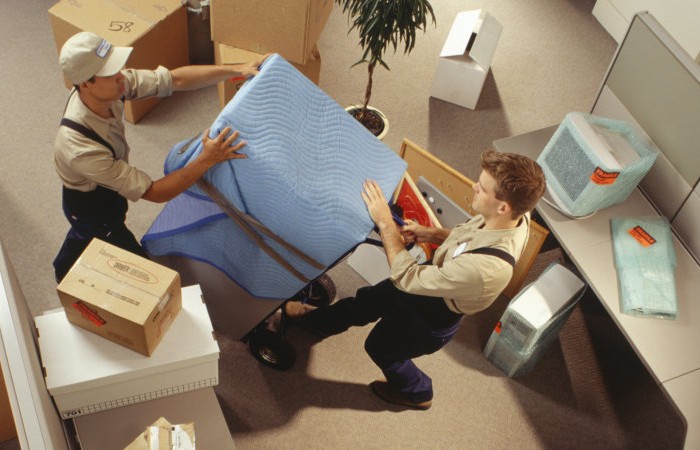
What Are The Best Practices For Moving Office Desks And Chairs?
Pre-Move Preparation
Assessing the Space and Inventory
Before initiating the move, conduct a thorough assessment of both the current and new office spaces. Measure the dimensions of desks, chairs, and other large items to confirm they will fit in the new location. Create an inventory list of all furniture pieces and their condition. This will help in planning the move and in identifying any potential need for repairs or replacements.
Planning the Layout
Develop a detailed floor plan for the new office layout. This plan should include the placement of desks, chairs, and other essential items. Consider the flow of movement within the office and ensure that the new layout will support a functional and productive workspace. This planning phase is crucial for avoiding last-minute changes and disruptions.
Notifying Stakeholders
Inform all relevant stakeholders about the move well in advance. This includes employees, IT personnel, and facility managers. Provide clear instructions and timelines to ensure everyone is prepared for the transition. Effective communication helps in managing expectations and reduces the risk of misunderstandings.
Packing and Labeling
Disassembling Furniture
For larger office desks and chairs, disassembly may be necessary. Carefully remove any detachable parts such as legs, drawers, and hardware. Keep all screws and fittings in labeled bags to simplify reassembly. Disassembling furniture can prevent damage and make it easier to maneuver through doorways and hallways.
Protecting Furniture
Use protective materials to safeguard furniture during the move. Wrap desks and chairs with moving blankets or bubble wrap to shield them from scratches and dents. For glass surfaces, use cardboard or specialized moving pads to prevent breakage. Ensure that all protective materials are securely fastened.
Labeling Boxes and Furniture
Clearly label all boxes and furniture components with their contents and destination. This will streamline the unpacking process and ensure that items are placed in the correct locations. Use color-coded labels or numbered systems for added clarity. Accurate labeling reduces the time spent searching for specific items.
Moving Day Logistics
Organizing the Move
On the day of the move, organize your team and assign specific roles. Designate team leaders to oversee different aspects of the move, such as packing, loading, and unloading. Having a structured plan ensures that the move progresses smoothly and that all tasks are completed efficiently.
Handling Heavy Items
When moving heavy desks and chairs, use appropriate moving equipment such as dollies and furniture sliders. Ensure that all team members are trained in proper lifting techniques to prevent injuries. Teamwork is essential when handling bulky items; coordinate movements to maintain balance and avoid accidents.
Monitoring the Move
Continuously monitor the progress of the move to address any issues that arise promptly. Checklists and progress reports can help track the completion of tasks and ensure that nothing is overlooked. Regularly communicate with the moving team to provide updates and resolve any problems.
Post-Move Setup and Review
Reassembling Furniture
Once the furniture is in the new office, begin the process of reassembling and setting up. Follow the earlier disassembly instructions and ensure that all components are securely reattached. Take extra care when assembling desks and chairs to ensure stability and functionality.
Inspecting for Damage
Conduct a thorough inspection of all furniture and equipment to identify any damage that may have occurred during the move. Address any issues immediately by repairing or replacing damaged items. This step is crucial for maintaining the quality of your office environment.
Organizing the Workspace
Arrange the furniture according to the pre-planned layout. Ensure that all items are placed in their designated locations and that the workspace is organized for optimal productivity. Verify that electrical outlets and network connections are accessible and functional.
Gathering Feedback
After the move is complete, solicit feedback from employees regarding the new office setup. Their input can provide valuable insights into the effectiveness of the layout and any adjustments that may be needed. Use this feedback to make any necessary changes and improve the workspace.
Conclusion
Successfully moving office desks and chairs require meticulous planning and execution to ensure minimal disruption and maximum efficiency. By following the outlined best practices, including thorough pre-move preparation, careful packing and labeling, effective management on moving day, and post-move setup, you can facilitate a smooth transition to your new office space.
Related Courses and Certification
Also Online IT Certification Courses & Online Technical Certificate Programs
 Moving office desks and chairs can be a complex task that demands careful planning and execution to ensure the safety of both the furniture and the people involved. Implementing best practices for this process, especially when working with
Moving office desks and chairs can be a complex task that demands careful planning and execution to ensure the safety of both the furniture and the people involved. Implementing best practices for this process, especially when working with 
